- There are no more items in your cart
- Shipping Calculated at checkout
- Sub-Total (inc. VAT) £0.00
Need Help?
Sealants, Adhesives, Foams and Coatings
Specialist fire-stopping sealants, adhesives, foams and coatings, for use to seal around fire-resisting batts and services including pipes (plastic and metal), cables, and conduits. Suitable for new installation or retrofitting into existing construction. Click here for the full firestopping range.
If you require more help to find and specify fire protection for your project or contract, our technical team are always on hand to advise. Give us a call on 0113 2455450 (option 2) or send a message to [email protected].
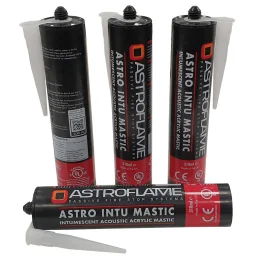
Astroflame Intumescent Acoustic Mastic
One-part intumescent acrylic mastic for sealing gaps around fire doors, window frames and for sealing joints, voids and irregular holes in fire rated structures. Forms a char, preventing the passage of fire and smoke, when exposed to the heat of a fire.Tested around: metallic pipes, cable trays, cable bunches, small, medium & large...
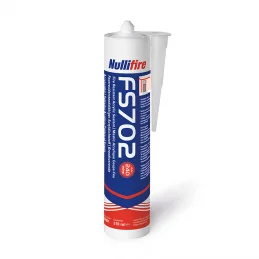
Nullifire FS702 Intumastic Fire Resistant Acrylic Sealant
Water-based acrylic sealant which cures to give a firm but flexible fire seal. Suited for use around non-combustible services, cables, rock fibre insulated non-combustible pipes, using a minimum depth of 25 mm. FS702 has excellent adhesive qualities and can also be used for the bonding and pointing of joints and service penetrations in...
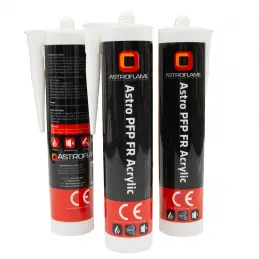
Astroflame Intumescent PFP FR Acrylic Sealant
Designed to prevent the spread of fire and smoke through joints and openings in fire rated walls and floors (including openings formed around building service penetrations); also maintains the acoustic design performance.Suitable for most surfaces, included concrete, masonry, steel, gypsum, glass, plastics and most non-porous surfaces...
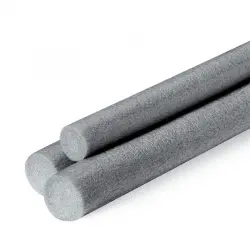
Nullifire PR102 PE Joint Backer Rods
Used to control sealant depth in sealant joints, avoiding 3-sided adhesion. Available in white.Important!Selected items are Made To Order subject to a MOQ and an extended lead time - see 'Size Reference' below
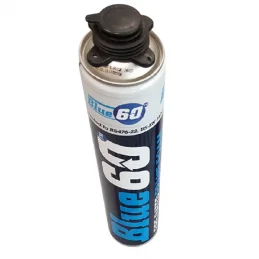
Astroflame Blue 60 Fire Rated Frame Foam
Specially formulated expanding foam that, when used in conjunction with Blue 60 fire rated packers (available from the drop-down menu below), gives up to 60 minutes fire protection to timber doorsets without the use of additional mastics or sealants. Please note: Astroflame Blue 60 Packers MUST be purchased with each box of Astroflame Blue 60...
Nullifire FS703 Intusil Fire Resistant Silicone Sealant
Fire-stopping sealant designed for aggressive exterior use on high-sheen surfaces (glass, aluminium) and in high-movement joints for up to 50% movement. Suitable to fire seal joints incompartment walls and floors such as masonry to masonry, masonry to timber, masonry to steel - see the description below for a list of suitable surfaces and...
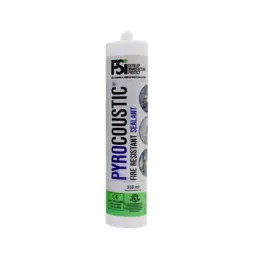
FSi Pyrocoustic Fire Resistant Sealant
Water-based acrylic sealant used to reinstate the fire resistance of wall and floor constructions in linear joints and where apertures are penetrated by multiple services. Developed utilizing specialist polymer technologies allowing it to be tested and Certified to internationally recognised standards, including Certifire, CE marking and UL...
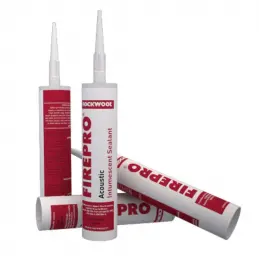
Rockwool Acoustic Intumescent Sealant
High specification, one part water based acrylic sealant. Acoustic Intumescent Sealant is designed for use in the installation of Rockwool Ablative Coated Batt, sealing linear joints and some individual service penetrations passing through various substrates.Up to 4 hours* fire protection Used to reinstate the fire resistance of wall and...
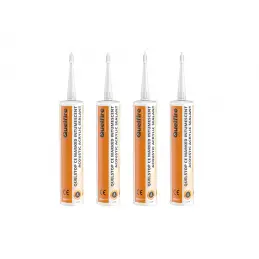
Quelfire QuelStop Intumescent Acoustic Acrylic Sealant
Water-based intumescent acrylic used to provide a fire rated linear joint or gap seal up to 4 hours (EI240), and to maintain the fire rating of walls and floors where they have been penetrated by services as part of the QuelStop Fire Batt System or direct to the substrate. Should be applied to all cuts, joints and exposed edges of the batt...
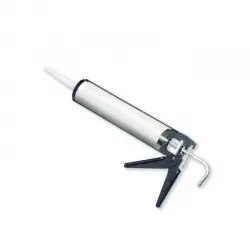
Thermoguard Intumescent Mastic
A one-part intumescent acrylic mastic for sealing gaps around fire doors, window frames and for sealing joints, voids and irregular holes in fire rated structures. Forms a char, preventing the passage of fire and smoke, when exposed to the heat of a fire.Tested around: metallic pipes, cable trays, cable bunches, small, medium & large...
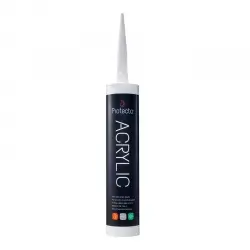
Protecta FR Acrylic 4hr Intumescent Sealant
Forms a durable intumescent char when exposed to fire. Suitable for use on drywalls, masonry walls, concrete walls, concrete floors, composite floors, timber walls, and floors. Seals penetrations including cables, conduits, metal pipes, plastic pipes, and pipe insulation materials such as stone wool and glass wool. Achieves up to 4 hours...
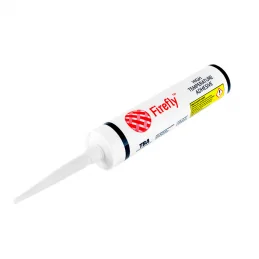
Firefly High Temperature Adhesive
A single component, inorganic adhesive for bonding metals and other low absorbency materials with high temperature resistance. Used primarily to seal penetrations in Firefly Fire Barriers Non toxic, non hazardous Good electrical resistance Solvent resistance to most non-aqueous chemicals Silica based ceramic compound Up to 1100°C...
FSi Pyrolastic Fire Resistant Silicone Sealant
One-part, neutral curing silicone for construction joints. Pyrolastic cures at room temperature under the action of atmospheric moisture to give a permanently flexible silicone rubber.Prevention of air leakage - Maintains acoustic performance, Assumed working life of 25 years Highly flexible - Cold smoke seal - Wide range of backing...
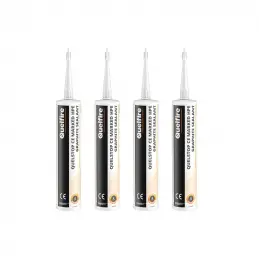
Quelfire QuelStop Intumescent HPE Graphite Sealant
High expansion intumescent acrylic based graphite sealant used to provide a fire rated linear joint or gap seal and to maintain the fire rating of walls and floors where they have been penetrated by services as part of the QuelStop Fire Batt System or direct to the substrate. Up to 4 hours fire rating (EI240). May be used for sealing around...
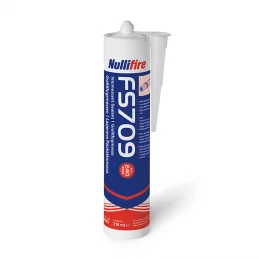
Nullifire FS709 Intumastic HP Intumescent Sealant
A heat-reactive, intumescent acrylic fire barrier mastic for internal use around services in walls and floors.Seals around pipes, cables and cable trays. Provides up to 4 hours of fire resistance. 60 to 120 min tack time (depending on temperature/humidity).
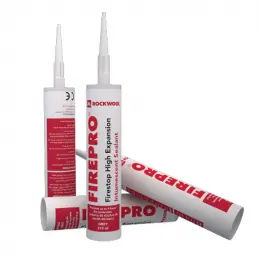
Rockwool High Expansion Intumescent Sealant
Water based acrylic sealant containing graphite. In the event of a fire, the active components provide a high volume expansion and pressure seal, closing off the void left by combustible materials.Reacts to temperatures above 135°C which is used to reinstate the integrity and insulation rating of compartment walls and floors where...
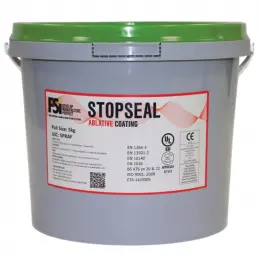
FSi Stopseal Ablative Coating
Highly advanced flexible coating for use when installing the Stopseal Batt System. The Stopseal Ablative Coated is used to seal in the Stopseal Batt to reinstate the fire resistance performance of wall and floor constructions where apertures are penetrated by single or multiple services.Simple to install, through spray or brush application...
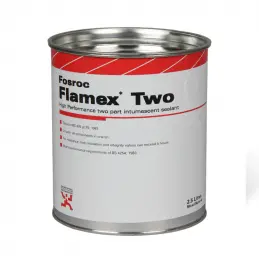
Fosroc Flamex Two
2-component high performance sealant which forms a tough, flexible rubber-like seal. Extensively fire tested in accordance with BS 476 Pt:20: 1987. Suitable for fire protection in expansion and construction joints in walls, floors and ceilings, confining smoke and fire, giving extra time for people to escape from a fire situation. Flamex...
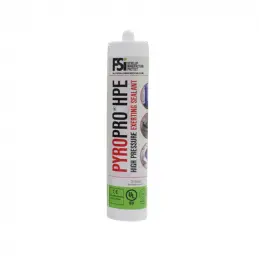
FSi PyroPro HPE Intumescent Graphite Sealant
Water based acrylic sealant used to reinstate the fire resistance of wall and floor constructions in apertures when penetrated by multiple services. Developed utilizing specialist intumescent technologies which result in the sealant expanding in the presence of heat or fire.Tested with a wide range of services, including plastic pipes,...
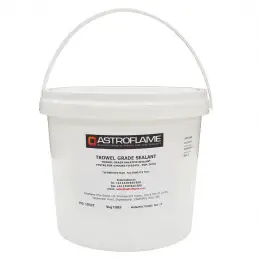
Astroflame Fire Resistant Batt Coating Trowel Grade
1 part intumescent acrylic mastic - only compatible for use with Astroflame Fire Resistant Batts and cannot be used with any other Fire Batts - for sealing gaps around fire doors, linear joints, penetration seals, voids and irregular holes in fire rated structures. The sealant forms a char, preventing the passage of fire and smoke, when...
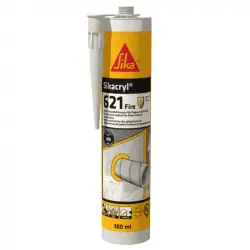
Sikacryl-621 Fire+ Resistant Interior Sealant
Restores the fire resistance performance of a floor or wall which incorporates penetration services or linear seals. The extremely versatile 1-part product is ready to use and easy to apply, providing acoustic insulation and up to 4 hours fire resistance.Wide service temperature, from −20 °C min. to +70 °C max. Can be combined with many...
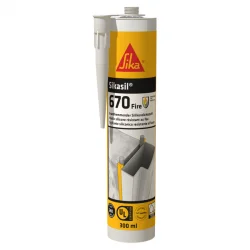
Sikasil-670 Fire Rated Elastic Joint Sealant
A fire rated, single-component, moisture-curing, low-modulus elastic joint sealant for linear joints in interior and exterior walls and floors. Designed for fire rated movement and connection joints on porous and non-porous substrates, providing up to 4 hours fire resistance according to EN 1366-4.Good adhesion to many different substrates...
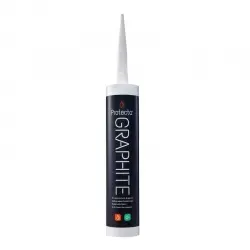
Protecta FR Graphite 4hr Intumescent Sealant
Fire-rated graphite sealant, expands under heat to prevent fire and smoke spread. Suitable for sealing penetrations in fire-rated walls and floors, including plastic pipes, cables, and conduits. Provides fire resistance for up to 4 hours when tested to EN 1366-3 and EN 13501-2. Permanently flexible with movement accommodation up to 12.5%....
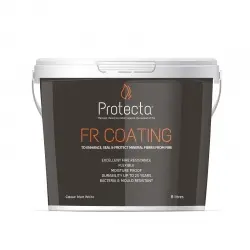
Protecta FR Coating
Single pack, ablative fire-resistant coating for mineral fibres, available in white. Designed for use on mineral fibre boards, concrete, bricks, masonry, steel, wood, gypsum, glass, plastics, and most non-porous surfaces. Tested for fire resistance to EN 1366-3, EN 1366-4, and EN 1366-12, with CE-Mark, UL-EU Certificate, UAE Certificate of...
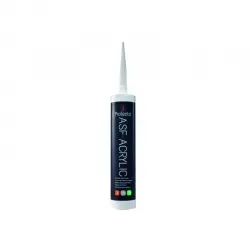
Protecta FR ASF 4hr Intumescent Sealant
Single-pack, intumescent fire sealant with up to 4-hour fire rating, designed for sealing linear joints and service penetrations. Available in white. Suitable for use on fire-rated walls and floors, including concrete, masonry, aerated concrete, and drywall. Certified to EN 1366-3 and EN 1366-4, with CE marking, UL-EU certification, and...
Pyroplex Fire Rated Silicone Sealant
1 part, low modulus, neutral cure, halogen-free product suitable for the sealing of construction joints, and around pipe penetrations which have been protected by the recommended Pyroplex intumescent product.Ideal for the weathersealing of curtain walling, building facades and expansion joints in fire rated walls. Fire resistance up to...
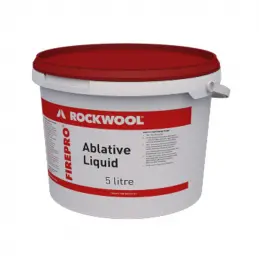
Rockwool Firepro Ablative Liquid
Water based, ready to use viscous paste which may be brush or spray-applied to stone wool slabs.Used to further improve the fire resistant properties of Rockwool stone wool slabs. The ablative nature of the coating resists flame spread and forms an insulated char which protects the stone wool slab.
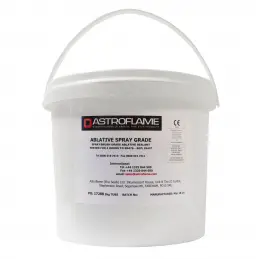
Astroflame Fire Resistant Batt Coating Spray Grade
Water-based, acrylic, ablative coating - only compatible for use with Astroflame Fire Resistant Batts and cannot be used with any other Fire Batts - with excellent fire, water, air permeability and elastomeric properties. It prevents the passage of fire, air and sound between fire rated compartments and has been tested in block wall, concrete,...
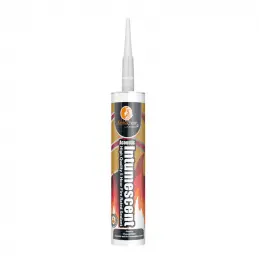
Cromar Alphachem Acoustic Intumescent Sealant
High quality, one part, flexible 5 hour fire rated sealant used to maintain fire performance in walls, floors and penetration seals. It can also be used to form linear gap seals where gaps are present within the wall and floor construction and linear joints.Intumescent properties that cause it to swell upon heating Excellent sound...
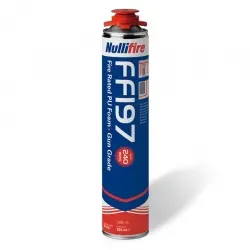
Nullifire FF197 Gun Grade Fire Rated PU Foam
A modified, single component, fire rated polyurethane foam used to seal door frames and linear gaps throughout the fire rated areas of a building. This pink fire foam is easy to identify and cures to form a semi-rigid foam that can accommodate some degree of movement of the joint.Acts as an effective fire seal for up to 4 hours (BS EN...

Astroflame High Pressure Expanding Sealant
An acrylic based graphite sealant used to reinstate the fire resistance performance of wall and floor constructions where they have been provided for the penetration of single or multiple services, to form penetration seals where gaps are present.Expands upon contact with heat (also known as intumescent or reactive material) Suitable for...
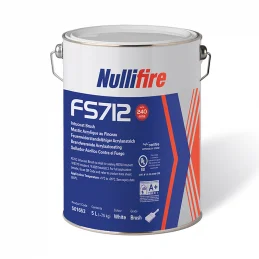
Nullifire FS712 Intucoat Brush Grade
Water-based acrylic coating and adhesive, which may be used in conjunction with FB750 Intubatt, FB770 Intudeck and FJ220 Intubatt 3 as a bonding agent and a surface repair coating.Up to 4 hours fire resistance - Tested to EN 1366-4, EN 1366-3 and BS 476 Pt 20-22 in conjunction with FB750 Intubatt, FB770 Intudeck and FJ220 Intubatt 3 Used...
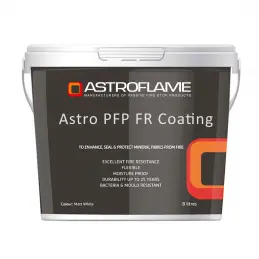
Astroflame PFP FR Board Coating
Spray grade ablative sealant coating - only compatible for use with Astroflame PFP Fire Resistant Boards and cannot be used with any other Fire Batts - designed to enhance, seal and fire protect stonewool fibres in Astro PFP FR Boards. Designed to be applied via spraying directly onto stonewool fibres, it resists flame spread and protects the...
Need Help?
Need Help?
What are fire-resistant adhesives, sealants, and foams, and where are they used?
Fire resistant adhesives, sealants, and foams are materials specifically designed to maintain their integrity and continue functioning when exposed to fire, thereby preventing the spread of fire, smoke, and toxic gases through joints, seams, and openings in buildings. They are commonly used in construction to seal joints between fire-rated walls and floors, around pipework and cables that penetrate fire-rated compartments, and in various building services such as HVAC systems to prevent the spread of fire through ducts and conduits.
These materials are part of the broader category of passive fire protection, which includes systems and components built into the structure of a building to enhance its ability to resist fire without needing external energy or activation (unlike active fire protection systems such as sprinklers).
The Differences Between Fire Resistant Adhesives, Sealants and Foams
Aspect | Adhesives | Sealants | Foams |
Primary Function | Bonding materials together while resisting fire | Sealing gaps, joints, and penetrations against fire, smoke, and gas spread | Filling cavities, gaps, and spaces to prevent fire and smoke spread |
Application Areas | Fire-rated doors, panels, structural joints | Joints around walls, floors, ceilings, service penetrations (e.g., pipes, ducts) | Gaps around cables, pipes, doors and windows. |
Key Performance | Maintains bonding strength under high temperatures | Expands to fill gaps, preventing fire and smoke spread | Expands to seal larger gaps and cavities, maintaining integrity under fire[NR1] |
Durability | Highly durable, designed for long-term stability | Moderate to high, depending on type (intumescent, silicone-based) | Varies, with some foams offering long-term stability and others more suited for temporary solutions |
Fire Resistance Duration | Typically rated for specific durations, such as 30-120 minutes | Rated[NR2] for specific fire resistance periods (e.g., 30-240 minutes) | Typically rated for 30-240 minutes, depending on the product and application |
Advantages | Strong bonding, critical for structural integrity | Flexible and adaptable to various joints and gaps | Quick and easy application, ideal for irregular gaps and large cavities |
Limitations | Limited to bonding applications, not suitable for filling large gaps | May require careful application to ensure effectiveness | Can be less durable under mechanical stress or if improperly applied |
Fire Resistant Adhesives
Fire resistant adhesives play a crucial role in enhancing the safety and integrity of buildings during events caused by fire:
Function of Adhesives in Fire Resistance
Fire resistant adhesives are specifically formulated to bond materials together while retaining their fire-resistant properties. They are essential in ensuring that joints and bonded areas do not weaken under high temperatures, thereby maintaining the structural integrity of the building. These adhesives are critical for preventing the premature failure of structural elements during a fire, enabling safe evacuation and reducing the risk of collapse.
Applications
- Fire-Rated Doors: Fire resistant adhesives are used to assemble fire-rated doors, ensuring that the door maintains its integrity and prevents the spread of fire and smoke through the doorway.
- Panels: These adhesives are employed in the construction of fire-rated panels used in walls and ceilings, helping to maintain compartmentation within the building.
- Construction Joints: They are applied in construction joints where maintaining bond strength is critical under fire conditions. This includes joints in fire-rated walls, floors, and ceilings.
Performance
The performance of fire resistant adhesives is primarily measured based on their ability to resist degradation and maintain bonding strength at elevated temperatures. Several factors influence their effectiveness:
- Temperature Resistance: The adhesive must withstand high temperatures without breaking down or losing its bonding properties.
- Duration of Resistance: The ability of the adhesive to maintain its integrity for a specific duration during a fire, often tested for periods ranging from 30 minutes to several hours.
- Compatibility with Materials: The adhesive should be compatible with the materials being bonded, ensuring a strong and durable bond even under fire conditions.
Types of Fire Resistant Adhesives
1. Intumescent Adhesives
- Function: Intumescent adhesives swell when exposed to heat, forming an insulating char layer that protects the underlying materials from fire.
- Applications: Commonly used in areas where joints and seams require additional fire protection, such as in fire-rated doors and panels.
- Performance: Effective in sealing gaps and providing an additional layer of fire resistance by expanding to fill spaces and prevent the spread of fire and smoke .
2. Non-Intumescent Adhesives
- Function: These adhesives do not expand but are formulated to withstand high temperatures without losing their bonding strength.
- Applications: Suitable for use in structural applications where expansion of the adhesive is not required, such as in the assembly of fire-resistant structural elements.
- Performance: Provide consistent bond strength under high temperatures, ensuring the structural integrity of the bonded elements during a fire .
Fire Resistant Sealants
Fire resistant sealants are crucial components in building construction, particularly in maintaining the fire integrity of various structures. These materials are applied to joints, seams, and gaps within walls, floors, ceilings, and around service penetrations to prevent the spread of fire, smoke, and gases.
Function of Fire Resistant Sealants
Fire resistant sealants serve a critical role in passive fire protection by sealing potential pathways through which fire, smoke, and toxic gases could spread during a fire. These sealants are specifically designed to expand when exposed to heat, effectively closing off any gaps or joints that might otherwise allow the fire to penetrate different areas of a building.
Their primary function is to:
- Maintain Compartmentation: By sealing off openings, fire resistant sealants help maintain the integrity of fire compartments, thereby limiting the spread of fire and smoke within a building.
- Ensure Structural Integrity: These sealants prevent the breakdown of fire-rated barriers, helping to maintain the structural integrity of a building during a fire.
Types of Fire Resistant Sealants
There are several types of fire resistant sealants, each designed for specific applications and offering different levels of protection. The two primary types are:
- Intumescent Sealants:
○ Mechanism: Intumescent sealants expand significantly when exposed to heat, forming an insulating barrier that seals off gaps and joints. This expansion is crucial in preventing the spread of fire and smoke through structural openings.
○ Applications: Commonly used around service penetrations (such as pipes and cables) in fire-rated walls and floors. They are also applied in linear joints, where movement might occur, requiring a flexible yet fire-resistant solution.
- Silicone-Based Sealants:
○ Mechanism: These sealants offer flexibility and are designed to provide a seal that can accommodate movement within the structure, such as in expansion joints. While they may not expand as much as intumescent sealants, they maintain their sealing properties under high temperatures.
○ Applications: Ideal for use in movement joints where some degree of flexibility is needed, as well as around windows, doors, and other openings that may experience structural movement.
Applications of Fire Resistant Sealants
Fire resistant sealants are used in various critical areas of construction to ensure fire safety:
- Service Penetrations: Sealants are used to firestop penetrations made by pipes, cables, and ducts passing through fire-rated walls and floors. This is essential to prevent fire and smoke from travelling through these openings.
- Expansion Joints: In buildings, expansion joints allow for movement due to thermal expansion, seismic activity, or other factors. Fire resistant sealants used in these joints ensure that the fire compartmentation is not compromised even if the building moves.
- Linear Joints: Linear joints between different construction elements, such as between a wall and a floor or two walls, are sealed using fire resistant sealants to maintain fire resistance across these joints.
- Perimeter Sealing: Sealants are also used around the perimeter of fire-rated windows and doors to ensure that these elements do not become weak points in the fire barrier.
Performance of Fire Resistant Sealants
The performance of fire resistant sealants is typically measured by the duration for which they can maintain their fire-resistant properties, commonly rated in terms of minutes (e.g., 30, 60, 120 minutes). This rating indicates how long the sealant can effectively prevent the passage of fire and smoke during a fire event.
Key performance indicators include:
- Expansion Capability: For intumescent sealants, the degree and speed of expansion when exposed to heat are crucial. This determines how effectively the sealant can fill gaps and maintain a seal during a fire.
- Flexibility and Durability: For silicone-based sealants, flexibility and the ability to accommodate structural movement without losing fire resistance are important performance characteristics.
- Adhesion: The sealant's ability to adhere to various construction materials, such as concrete, steel, and wood, is critical for maintaining a reliable seal under fire conditions.
- Compatibility: The sealant must be compatible with the materials it is applied to and should not degrade or react negatively with those materials under fire conditions.
Regulatory Standards and Testing
Fire resistant sealants are subject to rigorous testing to ensure they meet the required fire resistance standards. These tests typically involve exposing the sealant to high temperatures and assessing its performance in terms of expansion, adhesion, and sealing effectiveness over a specified period.
In the UK and Europe, fire resistant sealants are often tested according to standards such as BS 476 Part 20 (fire resistance of construction elements) and EN 1366-4 (fire resistance tests for service installations). These standards ensure that the sealants provide the necessary level of protection in real-world fire scenarios.
Fire resistant sealants are essential components in the construction of fire-safe buildings. They provide critical protection by sealing gaps and joints that could otherwise allow the spread of fire and smoke. Understanding the different types of sealants and their specific applications is crucial for ensuring that the appropriate product is used in each situation. Proper application and adherence to performance standards are key to maintaining the effectiveness of these sealants in protecting lives and property during a fire.
Fire Resistant Foams
Fire resistant foams are an essential component of passive fire protection in buildings. They are designed to fill gaps, cavities, and spaces within construction elements, creating barriers that prevent the spread of fire, smoke, and hot gases.
Fire resistant foams are primarily used to seal voids and service penetrations in fire-rated walls, floors, and ceilings. These foams expand upon application, filling gaps and creating a seal that impedes the passage of fire and smoke. They are particularly useful in areas where other fire-resistant materials, like sealants or intumescent coatings, may not be as effective or practical.
Types of Fire Resistant Foams
- Polyurethane Foams:
○ These are among the most common fire-resistant foams used in construction. They are versatile and can be applied to a variety of substrates. Polyurethane foams expand upon application, sealing gaps and providing a degree of thermal insulation as well as fire resistance. They come in different grades, offering varying levels of fire resistance depending on the specific requirements of the building.
- Silicone-Based Foams:
○ Silicone-based foams offer greater flexibility and are particularly suited to environments where movement or vibration is expected in the joint or gap. These foams can maintain their seal in such dynamic conditions, which makes them ideal for use in joints or around penetrations where some movement might occur during a fire.
Applications
Fire resistant foams are used in a variety of applications, including:
- Sealing Around Cables, Pipes, and Conduits:
○ In fire-rated walls and floors, where services such as electrical cables, plumbing pipes, and HVAC ducts penetrate through fire compartments, fire resistant foams are applied to seal these gaps and prevent fire and smoke from spreading through these penetrations.
- Filling Gaps in Fire-Rated Doors and Windows:
○ These foams are also used to fill gaps around fire-rated doors and windows. They ensure that these openings do not become weak points in the building's fire protection strategy.
- General Construction Gaps:
○ Fire resistant foams are commonly used to fill various construction gaps, particularly in irregular or difficult-to-reach areas where traditional sealants may not be effective. This includes areas around structural elements or within the fabric of the building itself.
Performance
The performance of fire resistant foams is assessed based on their ability to:
- Expand and Fill Gaps Effectively:
○ When exposed to heat, fire resistant foams expand to fill voids and gaps, creating a seal that prevents the spread of fire, smoke, and toxic gases.
- Maintain Integrity Under Fire Conditions:
○ The effectiveness of these foams is also measured by their ability to maintain a seal for a specified duration under fire conditions. The performance of fire resistant foams is typically rated in terms of time (e.g., 30, 60, 120 minutes), indicating how long they can withstand fire exposure while still preventing the spread of fire and smoke.
- Thermal Insulation:
○ Fire resistant foams also provide a degree of thermal insulation, helping to reduce heat transfer through the sealed areas, which is particularly important in maintaining the temperature of fire compartments and preventing fire spread.
Advantages
- Ease of Application:
○ Fire resistant foams are relatively easy to apply, making them a popular choice in construction for sealing gaps quickly and effectively.
- Flexibility and Versatility:
○ Especially with silicone-based foams, they offer flexibility, which allows them to be used in dynamic environments where movement is expected.
- Effective in Large or Irregular Gaps:
○ These foams can be used in large or irregular gaps where traditional sealants might not be effective. Their expanding nature allows them to conform to the shape of the void they are filling.
Limitations
- Durability:
○ While fire resistant foams are effective in sealing gaps, their durability under mechanical stress or in environments with constant vibration may be limited. Over time, they may degrade if exposed to such conditions, although silicone-based foams offer more resilience in this regard.
- Application Sensitivity:
○ The effectiveness of fire resistant foams depends heavily on correct application. Improper application, such as insufficient coverage or incorrect environmental conditions during application (e.g., high humidity or low temperatures), can compromise their performance.
Fire resistant foams are a critical component in passive fire protection, particularly in sealing service penetrations and construction gaps. Their ability to expand and provide a fire-resistant seal makes them invaluable in maintaining the integrity of fire compartments within a building. However, like all fire protection materials, their effectiveness depends on proper selection, application, and adherence to performance standards.
These foams are most effective when used in combination with other fire-resistant materials, such as sealants and coatings, as part of a comprehensive fire protection strategy that ensures all potential fire spread paths are adequately sealed.
Why Use Fire Resistant Adhesives, Sealants and Foams?
Fire-resistant adhesives, sealants, and foams are essential components in a building’s fire protection strategy. They are crucial for containing fire and smoke, protecting structural elements, complying with fire safety regulations, and ensuring that escape routes remain safe during a fire. Their correct application and performance under fire conditions significantly enhance the safety of building occupants and the resilience of the building itself.
1. Containment of Fire and Smoke
- Fire Compartmentation: One of the primary roles of fire-resistant adhesives, sealants, and foams is to ensure that fire and smoke are contained within designated fire compartments. These compartments are sections of a building designed to withstand the spread of fire for a specified period, typically ranging from 30 minutes to several hours. By sealing gaps, joints, and penetrations, these materials prevent fire and smoke from spreading to adjacent compartments, thereby limiting the damage and allowing occupants more time to evacuate safely.
- Maintaining Integrity of Fire Barriers: Fire barriers, such as walls, floors, and ceilings, are designed to resist the spread of fire. However, any openings or joints in these barriers can be weak points that allow fire and smoke to pass through. Fire-resistant sealants and foams are applied to these areas to maintain the integrity of the barriers, ensuring they perform as intended during a fire.
2. Compliance with Fire Safety Regulations
- Building Codes and Standards: Modern building regulations require the use of fire-resistant materials in certain applications to ensure the safety of occupants and the protection of property. These regulations specify that buildings must be constructed in a way that limits the spread of fire and smoke, and the use of fire-resistant adhesives, sealants, and foams is often mandated to achieve this. These materials must meet specific fire-resistance ratings, demonstrating their ability to withstand fire for a designated period.
- Fire Testing and Certification: Fire-resistant products are subject to rigorous testing and certification processes to ensure they perform as required under fire conditions. This testing includes ensuring that materials can withstand fire exposure without significant degradation, thereby maintaining the fire compartmentation and structural integrity of the building.
3. Minimising the Spread of Toxic Smoke and Gases
- Smoke and Gas Containment: In addition to preventing the spread of flames, fire-resistant sealants and foams are crucial in limiting the movement of smoke and toxic gases. These are often more dangerous than the fire itself, as they can cause asphyxiation or poisoning before the flames reach occupants. Proper sealing of joints, gaps, and penetrations with fire-resistant materials helps to contain these hazardous by-products of combustion, improving the chances of safe evacuation.
4. Ensuring Effective Escape Routes
- Protection of Escape Routes: Fire-resistant materials are also used to protect escape routes, such as corridors and stairwells, from fire and smoke. By ensuring that these areas are sealed and protected, occupants are provided with a safe pathway to exit the building during a fire. This protection is critical for ensuring that escape routes remain usable for the duration of the evacuation process.
The difference between fire resistance and reaction to fire
Fire Resistance Integrity:
- Integrity refers to the ability of a structure to maintain its barrier against fire, preventing the passage of flames and hot gases through any openings. This is particularly important where there are penetrations through fire-resisting walls and floors, such as pipes, cables, and ductwork. The fire seal around these penetrations must be maintained for a duration equal to the required integrity performance of the fire compartment. This ensures that no gaps of sufficient size open up, which could allow the spread of fire and smoke from one compartment to another .
- Adhesives and sealants are commonly used in these applications, and in conjunction with other fire stopping products, for instance with fire batts in a batt and mastic configuration. It is essential these products are specified and used in the correct detail/application. They[NR3] seal joints and gaps around services that pass through fire-resistant barriers. They help to maintain the integrity of fire-rated walls and floors by ensuring that the seals can withstand fire and prevent its spread through these critical points.
Fire Resistance Insulation:
- Insulation involves preventing the transfer of heat through a structure, ensuring that the temperature on the unexposed side of a fire-resisting barrier does not rise to a level that could ignite adjacent materials. The fire insulation properties are essential to ensure that combustible materials near the fire-resisting barrier do not catch fire due to heat transfer. This is achieved by maintaining the temperature of the unexposed face below specific limits (typically an average increase of no more than 140°C) .
- Foams and insulating sealants are used to enhance the fire resistance of a structure by providing an additional layer of insulation. These materials expand under heat to fill gaps and provide a barrier that reduces heat transfer, thus helping to maintain the fire resistance of the compartment. The use of such materials is particularly important in applications where the structure might be exposed to high temperatures for extended periods, such as in fire compartments .
What standards and certifications must fire-resistant products comply with?
These products are tested according to established standards, such as BS 476 or the European EN standards. Testing involves exposing the product to fire under controlled conditions to assess its ability to prevent the passage of flames, hot gases, and smoke. Specific tests include:
- BS 476 Part 6: Measures fire propagation by assessing the contribution of materials to the growth of a fire.
- BS 476 Part 7: Assesses the surface spread of flame on the product.
- EN 13501-1: Provides a comprehensive classification based on multiple criteria, including ignitability, flame spread, and heat release.
1. Fire Testing and Assessment
- Initial Testing: Any fire protection material must undergo a fire testing procedure appropriate to its intended use before it can be marketed. This includes adhesives, sealants, and foams used in fire-resistant applications. The testing aims to evaluate how these materials perform under fire conditions, focusing on their ability to maintain integrity, prevent the spread of fire, and provide insulation. Tests typically measure attributes like fire resistance duration, the ability to withstand heat, and the prevention of smoke or flame penetration.
- Assessment: Beyond physical testing, further assessments are conducted to understand the specific conditions under which the product may be installed. These assessments help identify any limitations in the product’s application, ensuring that it performs as expected under different installation scenarios.
2. Certification Process
- Third-Party Certification:
○ This process involves an independent certification body, such as one accredited by the United Kingdom Accreditation Service (UKAS), evaluating the product. This evaluation is comprehensive and includes several stages:
- Performance Evaluation: The product is tested across a range of conditions to create a scope of certification that covers the entire product range. This ensures that the product meets the necessary standards under various conditions, not just a single test scenario.
- Factory Production Control Audits: Regular audits of the production processes are conducted to ensure that the manufacturing quality remains consistent and that the product continues to meet the required standards.
- Ongoing Verification: The certification body may perform ongoing checks, such as audit tests and inspections, to verify that the product continues to comply with the standards over time.
- Traceability: Manufacturers are required to label products appropriately to ensure traceability, which is crucial in case any issues arise that require investigation or corrective action.
- Assessment and Expert Judgment:
○When full third-party certification is not sought, manufacturers might rely on assessments or expert judgments provided by accredited fire test laboratories or qualified fire consultants. These assessments evaluate the product's performance across different tests and provide a comprehensive analysis of the product’s capabilities and limitations. While this approach can be valuable, it does not include the quality control measures inherent in third-party certification.
3. Types of Supporting Evidence
- Product Certification: This is the most rigorous form of evidence, involving third-party certification and offering the highest level of assurance regarding the product’s performance.
- Assessment/Expert Judgment: This provides a thorough analysis of the product's performance but lacks the ongoing quality control of third-party certification.
- Fire Test Reports: These reports document the results of fire resistance tests but are specific to the conditions under which the test was conducted. They are less comprehensive than certification and do not account for variations in installation conditions[NR4] . Always contact Rawlins’ Technical Team prior to purchase for checks with the manufacturer that the product proposed is suitable for the detail.
Maintenance Requirements for Fire-Resistant Adhesives, Sealants, and Foams
Maintaining fire-resistant adhesives, sealants, and foams is an ongoing responsibility that requires regular inspections, timely repairs, and careful adherence to guidelines to ensure that these critical fire protection measures remain effective over the life of the building.
1. Regular Inspections
- Purpose: Regular inspections are necessary to ensure that the fire-resistant products are still functioning as intended. Over time, environmental conditions, physical damage, or building modifications can compromise the effectiveness of these materials.
- Frequency: Inspections should be conducted periodically, with the frequency depending on the building's use, the environmental conditions, and any specific requirements set out by fire safety regulations or the manufacturer.
2. Condition Assessment
- Visual Inspection: During inspections, a thorough visual check should be performed to identify any signs of degradation, such as cracks, gaps, or loss of adhesion. Special attention should be paid to areas where fire-resistant materials have been applied to seal penetrations or joints, as these are critical to preventing the spread of fire.
- Environmental Effects: Assess whether the materials have been exposed to conditions that could degrade their performance, such as high humidity, exposure to chemicals, or physical wear and tear. Moisture-sensitive coatings, for instance, may require more frequent checks in humid environments.
3. Repair and Replacement
- Damaged Materials: Any damaged or deteriorated fire-resistant adhesives, sealants, or foams must be promptly repaired or replaced to maintain fire safety. The repair or replacement should be done following the manufacturer’s guidelines to ensure that the fire resistance of the construction is not compromised.
- Reapplication: In cases where the original application may have been compromised (e.g., due to building movement, structural repairs, or renovations), reapplication of the fire-resistant materials might be necessary. Ensure that the reapplication is carried out by trained professionals to maintain compliance with fire safety standards.
4. Documentation and Record Keeping
- Maintenance Records: It is essential to keep detailed records of all inspections, maintenance activities, and any replacements or repairs conducted. This documentation should include the date of the inspection or repair, the condition of the materials, any actions taken, and the products used for repairs or reapplication.
- Compliance with Regulations: Maintaining up-to-date records helps in demonstrating compliance with fire safety regulations and is useful during audits or inspections by fire safety authorities.
5. Adherence to Manufacturer’s Guidelines
- Manufacturer Instructions: Always follow the manufacturer’s instructions for the maintenance and reapplication of fire-resistant products. This includes using the correct products for specific substrates, applying them under the right environmental conditions, and ensuring that all work is carried out by qualified professionals.
- Limitations and Compatibility: Be aware of the limitations of the fire-resistant products and ensure that any materials used in repairs or replacements are compatible with the existing system. Incompatible materials or improper application can reduce the effectiveness of fire protection.
6. Engagement of Qualified Professionals
- Specialist Expertise: Given the importance of these materials in maintaining fire safety, any maintenance, inspection, or repair work should be conducted by professionals who are qualified and experienced in fire protection systems. This ensures that all work meets the required standards and that the fire-resistant products will perform as expected in the event of a fire.
